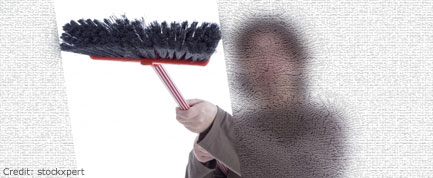Mystery Source of Urban Pollution Revealed

A crucial but unknown source of molecules linked with smog has long eluded scientists trying to uncover the origins of air pollution in cities. Now researchers find the grime that builds up on windows, buildings, roads and other urban surfaces might be this mystery source.
The findings could help improve bad-air predictions and strategies to fight smog.
While grime outside cities is often just natural dirt, grime in cities is "a soup of thousands of chemical compounds," explained University of Toronto atmospheric chemist James Donaldson. These come from auto and factory emissions, dust and salt on roads, kitchen smoke, flame retardants and a menagerie of other sources.
Donaldson's environmental chemist colleague Miriam Diamond analyzed urban grime for nitrogen oxides. These molecules are emitted when gasoline and other fossil fuels burn, and combine with other pollutants known as volatile organic compounds to form smog.
Donaldson and his collaborators found nitrogen compounds disappear from grime at rates that cannot simply be explained by obvious losses, such has getting washed away by the rain. In experiments, their results suggested that shining light on the grime made "inactive" nitrogen oxides that normally stayed put transform into "active" forms that got released into the atmosphere.
Sunlight that illuminates urban grime could activate the same reactions, as is detailed in the June 15 issue of the journal Environmental Science & Technology.
"To me, the surprising and exciting aspect of this finding is that there is much that we still do not know about the chemistry that takes place around us and affects our lives daily," Donaldson said.
Get the world’s most fascinating discoveries delivered straight to your inbox.
Donaldson added that his team's research could help improve air quality models currently being used to forecast bad air days. These are key in developing strategies to help fight pollution, he said.
- Quiz: What's Your Environmental Footprint?
- Timeline: The Frightening Future of Earth
- Study Reveals Natural Air Cleaners



